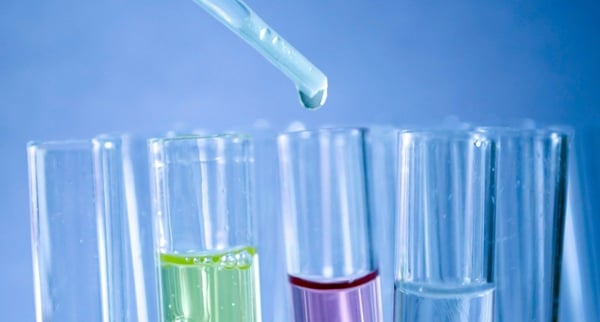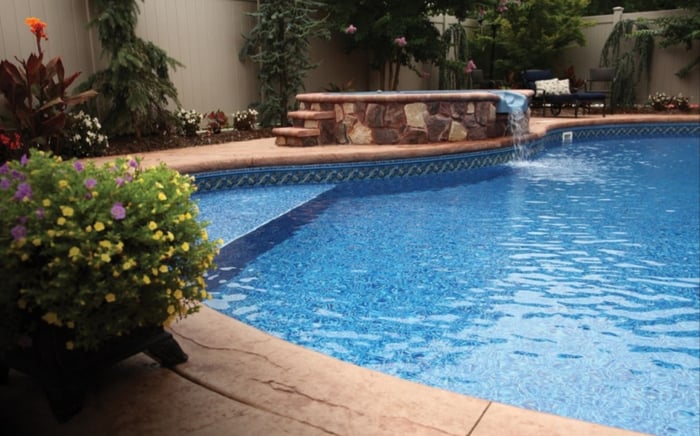With Spring around the corner, it's about that time to open your pools for a fresh new swim season. We've partnered with Poolresearch.com on this article to keep you up-to-date on how to test your pool's water properly. Let's dive into the details!
Having a pool is a lot of fun, and it's crucial to keep it clean. Most people know how to test for pH balance and chlorine levels, which is essential, but end up ignoring phosphates and potential contaminants, such as iron and calcium.
These substances can not only lead to unpleasant looking water that makes your pool uninviting but also cause severe damage to your pool. Fortunately, testing your pool water is easy if you know how to do it correctly.

Why Pool Water Testing Is So Important (And How to Do It)
Pool water testing is essential. Without it, there's no way to know what's in your water. While trace contaminants may not seem like a big deal now, over time they can develop into a really big problem. To avoid potential issues, it's important to test your water regularly.
The first thing you'll need is a water sample. To be sure to get an accurate reading, follow these simple steps:
- Make sure to use a clean cup.
- With the opening facing down, dunk the cup elbow deep as close to the center of the pool as possible.
- Fill the cup by turning it right-side up.
Once you have your sample, you can test it using strips, a liquid test kit, or by taking it to a store that specializes in pool sales and maintenance.
Always be sure to follow the directions carefully for each method and take your time. Rushing this process or doing it incorrectly will not give you the results you need.
Also, it's good practice to conduct pool water testing once a week. You may need to test more frequently when using your pool a lot, if it rained recently, and after every time you add chemicals.

5 Most Common Pool Water Contaminants and How to Test For Them
Contaminants can build up in your pool water for many reasons. They're often found because of the quality of water you put into the pool. For instance, well water can contain a lot of minerals, leading to high levels of copper and iron, while city water often has high amounts of calcium.
Testing for Copper
Copper buildup will cause your pool water to look cloudy and can have a greenish hue. This can happen due to copper in your tap water that grows more concentrated as water evaporates, or when the copper elements in your plumbing or pool filter are corroding (usually due to low pH levels).
Typical pool testing strips do not test for copper, so you'll need specific copper testing strips. If you do have high copper levels, you can add a metal sequestrant that will prevent the copper from causing corrosion, or employ a metal trap filter.
Testing for Iron
When your water is brown or rust-colored, it usually means you have high levels. Iron levels often rise because of low pH levels, just like copper, although it can also be from natural levels from your water source.
The good news is most test strips that test for copper also check for iron. The only difference is that you will add a special solution to verify for iron, which you should conduct about once a month. Also, the same remedies for copper work for iron, so use a metal sequestrant, a metal trap filter, and you can also use a hose filter.
Testing for Calcium
If the faucets in your house have calcium buildup, your pool filter and pump will have it too. For this reason, it's critical to keep calcium levels balanced. Too much can cause cloudy water and corrosion, but too little and your concrete pool surfaces can begin to dissolve and pit.
Fortunately, the best pool water testing kits will test for calcium, as well as the usual chlorine and pH levels. Ideally, you want calcium to be between 200 and 500 ppm. If this is too high, you can add muriatic acid, a flocculant that will clump and make calcium easy to remove or drain and fill your pool with softer water.
Testing for Phosphates
Phosphates are known to cause algae growth, which can be a serious problem. However, you don't need to test for them, as adjusting your phosphate levels, despite what a lot of people say, will not get rid of algae.
Instead, to prevent algae, use a copper-free algaecide. However, keeping your chlorine levels stable, as well as proper pH and alkalinity levels, is the best thing you can do to prevent algae from growing.
Testing for Salt
For saltwater pools, maintaining balance is the key. Too much salt can damage your pool's saltwater chlorinator, while too little can make the water unsanitary.
To test salt levels, you'll need specialty testing strips and aim for approximately 3200 ppm. Fix high levels by adding more water, while for low levels, add more salt. Keep testing until you’ve achieved perfect balance.
Final Thoughts
Pool water testing should be conducted regularly to avoid pool damage and from getting anyone sick. Nevertheless, with the right tools and the proper technique, it’s a simple process that will enable you to enjoy your pool for years to come!

A NOTE TO OUR READERS: We owe thanks for this well-written article to PoolResearch.com who provides consist in-depth details on all things pool related. We offer our sincerest gratitude for their partnership and encourage you to visit there page for additional resources and insight.
Keep in mind that the products or chemicals you use can either help or hinder the levels you are trying to achieve. Here are some other articles you may be interested in on this topic:







